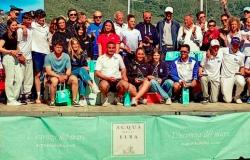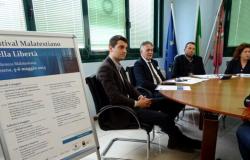- Home
- News
- “Cruise tourism, the Tuscany brand at its lowest terms. Livorno is unable to develop its important potential”
News
April 5, 2024
The analysis of Dr. Mario Antonio Gambacciani
Livorno 5 April 2024 – “Cruise tourism, the Tuscany brand at its lowest terms. Livorno is unable to develop its important potential.” Dr.’s analysis Mario Antonio Gambacciani
“If the noticeable contraction in movements in Veneto is attributable to the decree law 103/2021 which established the ban on entry into the Venice lagoon (therefore at the maritime station) of cruise ships exceeding 25 thousand tons, that of Tuscany is attributable to different reasons.
Cruise tourism, the “Tuscany brand” at its lowest terms. Livorno fails to develop its important potential.
In 2023, cruise passengers handled (embarking, disembarking and transit) in Italian ports were 13.79 million, a volume more than one million higher than the record year of 2019. Analyzing traffic on a regional basis and taking as a basis 2012 is the reference point, but there was a marked contraction in movements in Tuscany and Veneto and a significant growth in those linked to Liguria and Sicily.
| region | year 2012 | year 2016 | year 2023 |
| Liguria | 15.2 | 22.3 | 24.4 |
| Lazio | 22.2 | 21.2 | 24.1 |
| Sicily | 4 | 10.2 | 13.7 |
| Campania | 11.4 | 13.7 | 13.1 |
| Tuscany | 9.6 | 7.8 | 5.1 |
| Puglia | 5.9 | 3.5 | 4.7 |
| Veneto | 16.8 | 14.6 | 4.1 |
Movement of cruise passengers in Italy on a regional basis (% of the main regions compared to the national total). Source Answers tourism and Assoporti
If the noticeable contraction in movements in Veneto is attributable to decree law 103/2021 which established the ban on entry into the Venice lagoon (therefore to the maritime station) of cruise ships exceeding 25 thousand tons, that of Tuscany is to be traced back for various reasons.
What is certain is that, in the last decade, despite the ascertained and potential tourist demand for a visit to the art cities of Tuscany, the choice of a cruise with a stop in the main port of Livorno has significantly decreased. This goes against the trend of the development of the Italian market too, so much so that in relation to the port of Livorno there is an almost halving of the relative share. The potential of the “Brand Toscana” is not grasped above all due to a lack of overall competitiveness which will be analyzed below, with particular attention to structures and mobility on the ground.
| stopover | year 2012 cruise passengers handled x000 e % market share | year 2016 cruise passengers handled x000 e % market share | year 2023 cruise passengers moved x000 ie % market share |
| Civitavecchia | 2,398 22.0 | 2,339 21.1 | 3,316 24.0 |
| Venice | 1,739 15.9 | 1,605 14.5 | 507 3.6 |
| Naples | 1,228 11.2 | 1,306 11.8 | 1,650 11.9 |
| Genoa | 797 7.3 | 1,017 9.2 | 1,698 12.3 |
| Savona | 810 7.4 | 910 8.2 | 867 6.2 |
| Spice | 50 0.0 | 499 4.5 | 710 5.1 |
| Palermo | 354 3.2 | 510 4.6 | 939 6.8 |
| Livorno | 1,037 9.5 | 807 7.2 | 638 4.6 |
| Total Italy | 10,890 | 11,083 | 13,790 |
The performance of La Spezia emerges from the above data, which from 2012 to 2023, starting from scratch, surpassed Livorno in handling, closing an initial gap of one million cruise passengers!
Apart from the dimensional requirements of the cruise port and its purely technical equipment, La Spezia has proven to be competitive due to the presence of all those functions and services that favor the quality of the tourist experience on land.
The 2018 Irpet report below is significant in this regard.


These dimensions are known to shipowners and international tourist agencies, dimensions which take on further dimensions notable for the important presence of repeaters (they are on average one in four and are concentrated in particular among Europeans in the lower economic range and who generally travel on Contemporary segment cruises).
By checking the piers used for cruises in the port of Livorno, however, a sufficient number of available quays emerges, but of non-specific quality, as they are mostly not intended for passenger traffic (Alto Fondale, Molo Italia, Molo Mediceo , Darsena Toscana) and as such not integrated with the accommodation facilities located in the Cappellini Basin, with negative consequences on the level of reception of cruise passengers and their ability to disembark.


A decade after the approval of the Master Plan of the Port of Livorno, the program of structural and functional reorganization of the state-owned areas intended for passenger traffic still appears far from materialising. Instead, it would be desirable to construct the new maritime station building, the inclusion of spaces intended for more typically urban functions, a new accessibility system, the recovery and valorisation of important historical and cultural heritage.
Crucial in this reorganization is the availability of the High Seabed intended for the docking of 4 cruise ships at the same time and the adaptation interventions of all the piers, so as to allow the construction of the Maritime Station in a central position (rendering in the following image) .


As regards the valorization of historical heritage, the ongoing one of the Old Fortress is positive thanks to the collaboration between the System Authority and the municipal administration. However, this collaboration is struggling to materialize – here too for many years and despite the announcement of over a year ago by the System Authority itself – with regards to the belt road system and with it the valorisation of the water front and the relationship between the port and city.
This belt road system is strategic for the city, as it is intended to separate, as far as possible, port/industrial vehicular traffic from civil/tourist traffic with obvious benefits for both.
In particular, for cruise passengers’ access to the city and for its image, the pedestrian continuity of the new Maritime Station with Piazza del Luogo Pio appears fundamental, through the routing of vehicles in an underpass as per the rendering below.


The positioning of the planned exchange car parks serving the operators and vehicles waiting to board the ferries also appears strategic, as well as the availability of bus and taxi terminals for cruise passengers in transit and for “home port” cruise passengers. Both for the impact on the port image and for reasons of functionality, the placement in the area adjacent to San Marco appears optimal and in line with the PUMS, which provides a mobility hub for the area near the Leopolda station. All this should be accompanied by a shuttle service with the Maritime Station on tracks, perhaps within a city tram route, in addition to the availability of adequate hotel facilities.


That of “head cruises” is one of the historical weaknesses of the Livorno port. Analyzing the underlying data for 2023, it emerges:
-
the importance of the geographic location of home ports;
-
the irrelevant market share of the Livorno airport despite its geographic reference basin (Tuscany, Umbria, Emilia Romagna);
-
the importance of accessibility to airports and the organization of related services on the ground.
In addition to the aforementioned lack of dedicated parking, shuttle and hotel services, Livorno’s weakness lies in accessibility. In particular, in rail travel times that are not competitive compared to the main reference routes (regional, towards the north of the country and towards Rome), to which is added the positioning of the Central Station on the outskirts, distant and poorly connected to the Maritime Station .
As regards accessibility via air carriers, the proximity to Pisa international airport represents an opportunity to be exploited to the fullest, especially for Premium customers coming from North America, Northern Europe and Asia. In this regard, the reference model is that of Venice: it is a question of identifying cutting-edge methods.
In this regard, the PUMS predicts the Maritime Station-San Marco Station-S.Rossore Station railway connection and from here to Lucca with a stop at the People Mover interchange car park, in the Goletta area: it would be very different to introduce an additional 2 km link road, from the current railway ring side east to Goletta itself, with a scheduled stop at the airport which would eliminate load disruptions with obvious returns for traffic. From the airport baggage claim to the Maritime Station in 20 minutes!
The commercial policies of shipowners also have an impact on the organization of head cruises. Also in relation to this situation, the increase in movements expected in Livorno in the current year (from 638 to 800 thousand with a market share of 5.7%) is practically due to MSC with 77 rotations from 27 last year .
For the development of the Tuscany brand it is essential to drastically reduce travel times to Florence, Siena, the Etruscan coast and Lucca. Suffice it to say that currently from the Municipality of Livorno to that of Florence it takes about two hours regardless of the means of transport used, while from the Municipality of Pisa and that of Bologna to that of Florence, one hour, even in the presence of similar geographical distances!


The organization of the offer of use of cruise ship layover times is essential for the attractiveness of the port of call. The tourist is first of all a traveler and wants to make the best use of the time available.
The current offers of excursions to Florence by coach include the collection of cruise passengers by shuttle bus for the landing in Piazza del Municipio which practically functions as a terminal. Aside from the fares, almost half of the time in a day is spent on the transfer and return and this is discouraging especially for premium customers. Furthermore, it should be noted that the competitor La Spezia has similar offers.
The Livorno municipal administration, while it is committed to improving the attractiveness of the city, is not in designing railway solutions that would make the territory competitive for mobility. Every docking, every complete ship is income for the territory, regardless of the destination on land, not to mention that, by increasing flows, the number of cruise passengers stopping in Livorno also increases (around 30%).
Just think of the Raccordo project for port freight traffic which has now become obsolete from the point of view of competitiveness and needs to be updated in terms of High Capacity on the model of the Terzo Valico dei Giovi: Fi-Pi-Li railway instead of the Pisa, Ardenza-by pass Go instead of Collesalvetti Go to allow the transit of the Freccia Rossa. The first intervention would allow the preparation of special trains from the planned railway terminal of the Maritime Station to Santa Maria Novella with travel times of less than an hour and thus creating significant availability of time in Florence for the visit! In this context, the restoration of the San Marco station for regional traffic would also take on important importance.
Finally, it should be noted that the proposed designs would find sustainability in the current territorial civil flows while the tourist/cruise flows would be additional”.



















